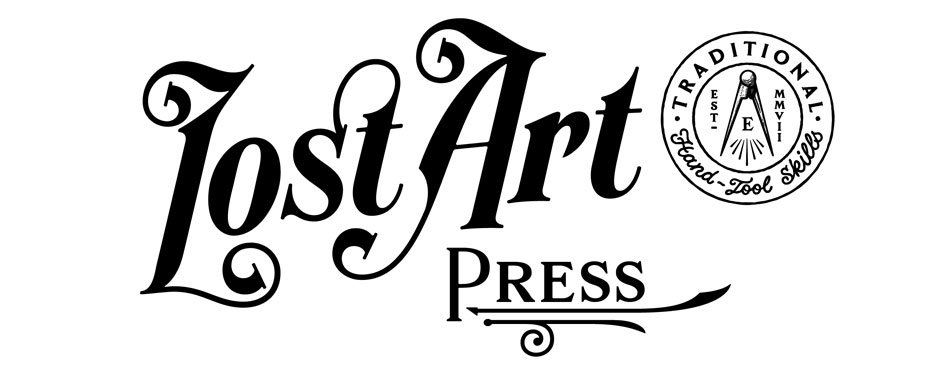
We’ve just added the latest Lost Art Press pocket book – “Make Fresh Milk Paint” – to our bundled pocket book offer: just $83 for the set.
Though the pocket books are small in size – just 4″ x 6-1/2″ – each one is chock-full of expert guidance on a given topic. Current titles (also available individually) include:
“Woodworker’s Pocket Book”
Edited by the great Charles H. Hayward and first published in 1949, “Woodworker’s Pocket Book” is a guide to everything from finishing recipes to drawing ellipses to choosing the correct screw or nail.
“Workshop Wound Care”
Author, woodworker and emergency room doctor and author Jeffrey Hill has seen every workshop accident in the book…in this book, to be exact. So he knows exactly the information a woodworker needs to know when it comes to injuries. And he presents information in a way that a non-medical professional can easily understand it.
“Sharpen This”
Author Christopher Schwarz cuts through the mystery and fear that surround sharpening and tells you what you need to know, in simple, easy-to-understand instruction. With the help of this book, you’ll quickly get your tools sharp and back to the fun part of woodworking: making them dull.
“Build a Chair from Bulls%$t”
With the instruction of author Christopher Schwarz, you can build a comfortable wooden stick chair using only materials and tools found at your home center. No jigs, no specialty tools and no exotic techniques. Shovel handles and stair handrails can be easily made into chair legs. The seat and headrest come from the construction lumber aisle. The spindles? Dowels. And the curved arm? Plywood.
“Make Fresh Milk Paint”
Woodworker Nick Kroll spent two years formulating and testing his recipe for fresh milk paint, which is based on historical recipes for casein paints – plus a little modern ingenuity. The paint goes on like an acrylic and dries fast – you can put on four coats in a day with no problem. Once dry, the paint has a low luster and hardens to become incredibly durable. You can then leave the paint as-is or topcoat it with wax, oil or whatever you prefer.


















